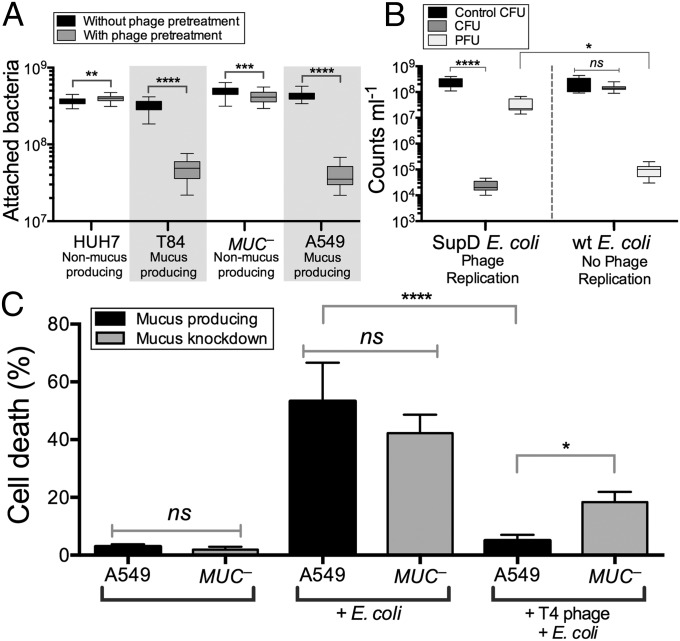Fig. 2.
Effect of phage adsorption on subsequent bacterial infection of epithelial cells. (A) Bacterial attachment to mucus-producing (T84 and A549) and non–mucus-producing (Huh-7, MUC–) TC cells, with and without phage pretreatment. T4 phage pretreatment significantly decreased subsequent bacterial adherence to mucus-producing TC cell lines (T84: n > 30, t = 32.05, ****P < 0.0001; A549: n > 30, t = 36.85, ****P < 0.0001; unpaired t tests). Less dramatic shifts were seen for non–mucus-producing cells (Huh-7: n > 30, t = 2.72, **P = 0.0098; MUC–: n > 30, t = 3.52, ***P = 0.0007; unpaired t tests). (B) Mucus-producing A549 cells were pretreated with T4 am43–44– phage (Materials and Methods) and then incubated for 4 h with either wild-type (wt) or amber-suppressor (SupD) E. coli. Phage replication in the SupD E. coli strain significantly reduced bacterial colony-forming units (CFU) in the mucus (n = 8, ****P < 0.0001, Tukey’s two-way ANOVA) and increased phage-forming units (PFU) relative to the no-phage replication wt E. coli (n = 8, *P = 0.0227). (C) Mortality of mucus-producing (A549) and mucus knockdown (MUC–) A549 lung epithelial cells following overnight incubation with E. coli. Phage pretreatment completely protected mucus-producing A549 cells from bacterial challenge (n = 12, ****P < 0.0001, Tukey’s one-way ANOVA); protection of MUC– cells was 3.1-fold less (n = 12, *P = 0.0181). ns, not significant.

